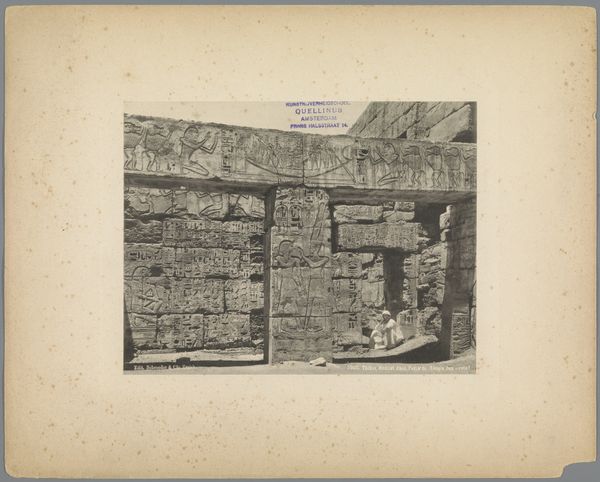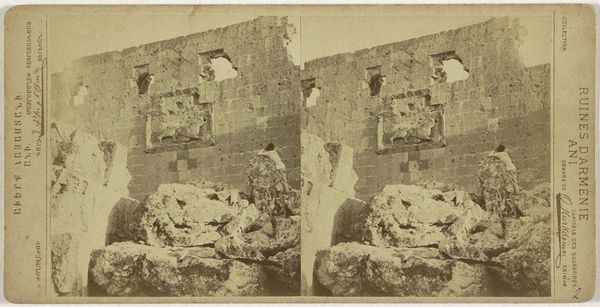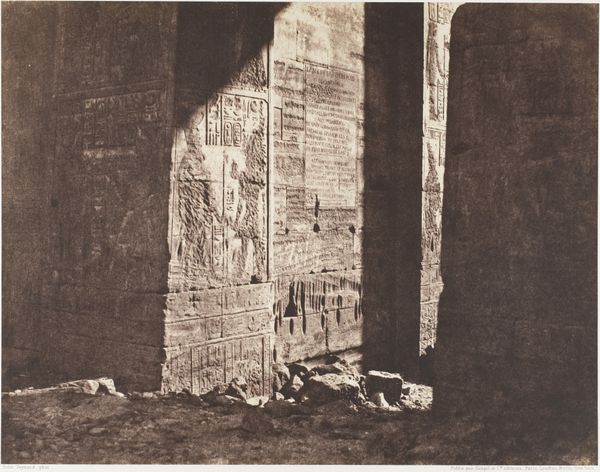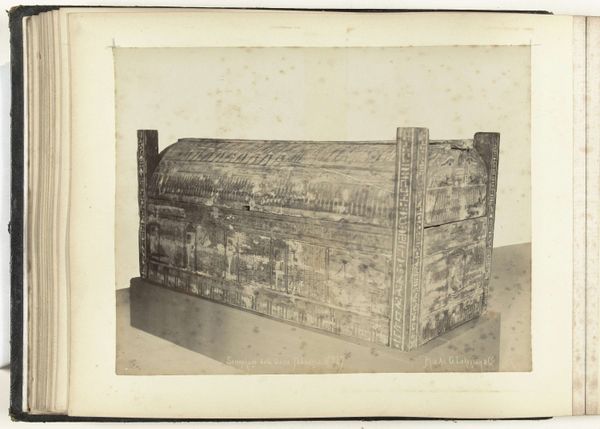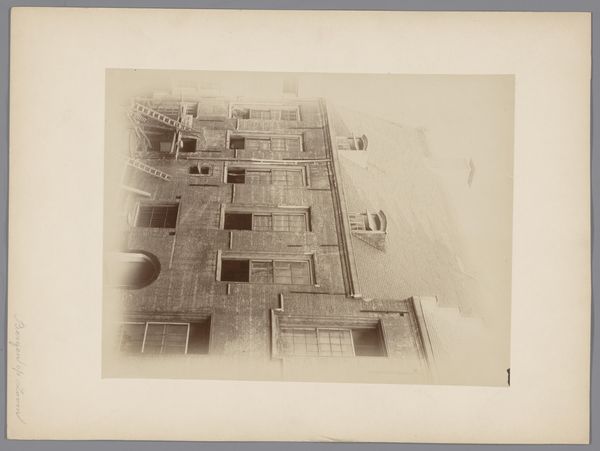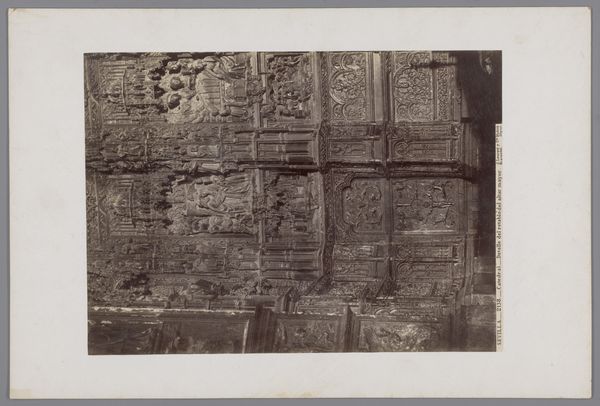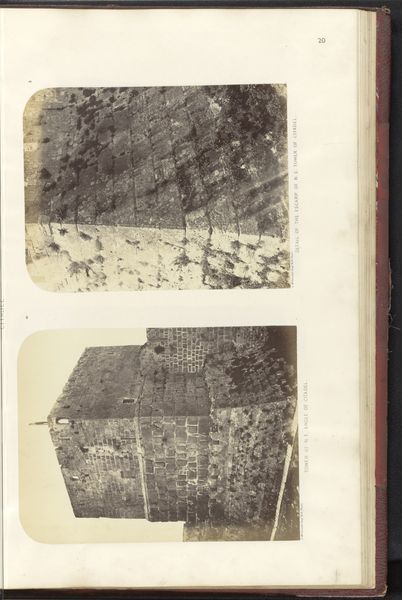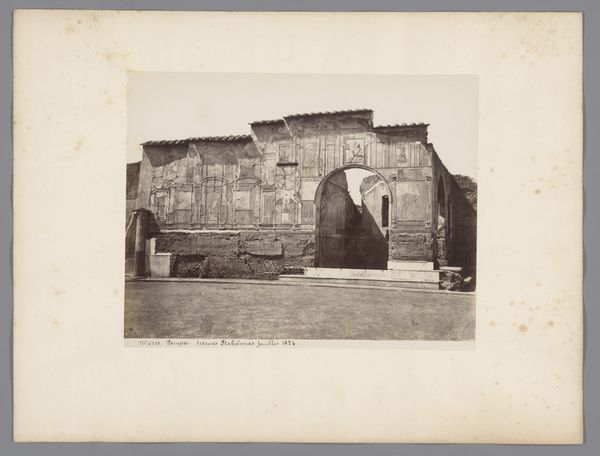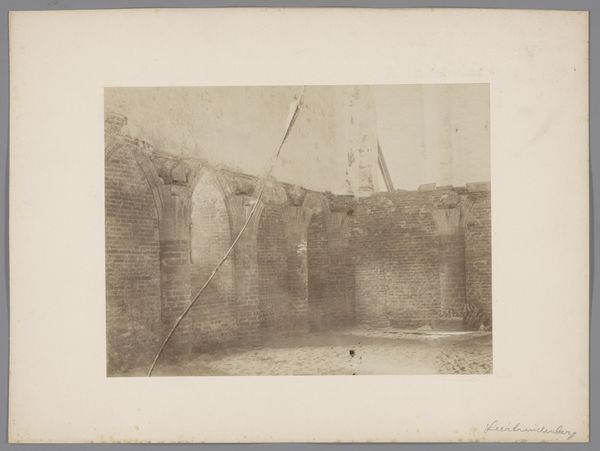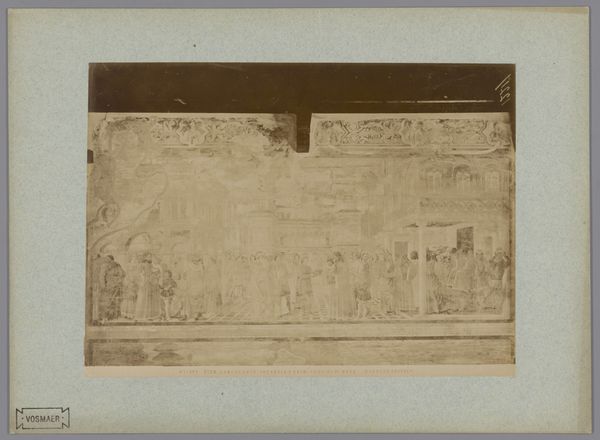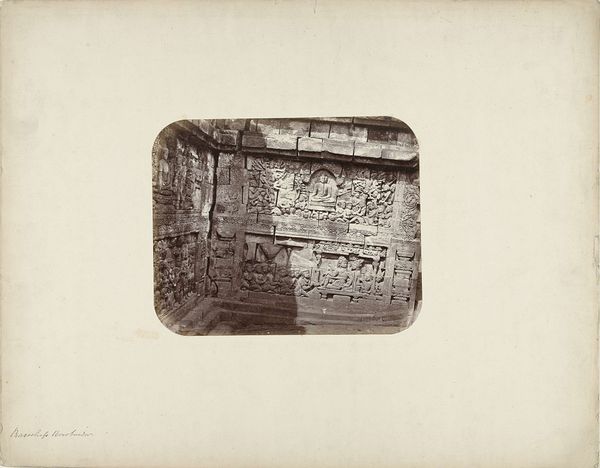
Bas-reliëf op de tempel van Ramses III te Medinet Haboe c. 1875 - 1900
0:00
0:00
relief, photography, albumen-print
#
relief
#
landscape
#
ancient-egyptian-art
#
photography
#
ancient-mediterranean
#
albumen-print
Dimensions: height 223 mm, width 285 mm
Copyright: Rijks Museum: Open Domain
Curator: This albumen print, dating roughly from 1875 to 1900, captures a section of bas-relief from the Temple of Ramses III at Medinet Habu. The photograph is attributed to Maison Bonfils. Editor: My first impression is one of profound scale—both the immense physical presence of the temple wall and the deep, unknowable span of time it represents. There is a haunting monumentality to it. Curator: Absolutely. Bonfils's choice to photograph this particular section invites consideration of its formal elements. The grid-like structure imposed by the blocks contrasts with the fluid lines of the hieroglyphs, creating a complex interplay of order and expression. Note how the light models the carving. Editor: I agree, the tension is compelling. And within that formal grid, the hieroglyphs become powerful symbols—a form of inscription that not only recorded history, but also codified societal power and divine authority. They literally embody the voice and image of a ruling class, speaking across millennia. The damage adds another layer. Curator: Indeed. The fragmentation disrupts the completeness, making visible the layers of construction. Note the figure at the bottom, it provides scale, but also a dark mass interrupting the visual field. Editor: He embodies, to me, the complexities of our own gaze—Western, likely male, imposing his presence onto this ancient narrative. A visual symbol of colonialism, subtly reminding us who controlled access to the narrative in that historical moment, both literally, and intellectually. The very act of photography, a western invention, further underscores this power dynamic. Curator: It’s certainly a striking reminder of the layered interpretations embedded in such images, influencing our understanding of composition and cultural significance. Editor: Ultimately, it highlights how photography can simultaneously preserve and mediate history, inviting us to reflect on our own positions in relation to the past and present. Curator: A potent interplay of form and socio-political content, encapsulated in this fascinating visual document.
Comments
No comments
Be the first to comment and join the conversation on the ultimate creative platform.
